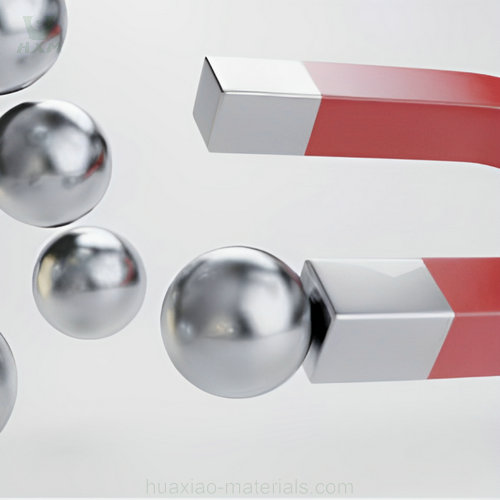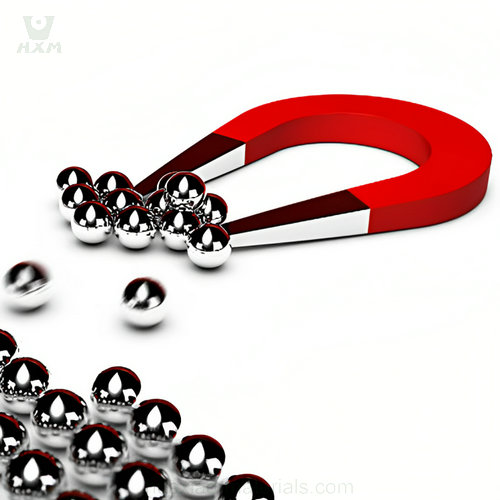Is stainless steel magnetic?
The magnetic properties of stainless steels vary depending on their composition and treatment. In general, austenitic stainless steels are usually non-magnetic, while martensitic stainless steels may be magnetic.


The magnetic properties of stainless steels vary depending on their composition and treatment. In general, austenitic stainless steels are usually non-magnetic, while martensitic stainless steels may be magnetic.


Stainless steel is mainly composed of iron, chromium, nickel and other elements. Among them, chromium is the key element with a content of at least 10.5%, which gives stainless steel its corrosion-resistant properties. And the magnetic property of stainless steel mainly depends on its iron content. Iron is a magnetic material, so stainless steel with a higher iron content is more likely to be magnetic.
| Carbon (C) | Chromium (Cr) | Nickel (Ni) | Manganese (Mn) | Phosphorus (P) | Sulfur (S) | Molybdenum (Mo) | Silicon (Si) | Magnetic? | |
|---|---|---|---|---|---|---|---|---|---|
| 201 | ≤0.15% | 16.00-18.00% | 3.50-5.50% | 5.50-7.50% | ≤0.060% | ≤0.030% | ≤1.00% | – | Yes (may vary) |
| 202 | ≤0.15% | 16.00-18.00% | 3.50-5.50% | 5.50-7.50% | ≤0.060% | ≤0.030% | ≤1.00% | – | Yes (may vary) |
| 304 | ≤0.08% | 18.00-20.00% | 8.00-10.50% | 2.00% | ≤0.045% | ≤0.030% | – | ≤1.00% | No |
| 316 | ≤0.08% | 16.00-18.00% | 10.00-14.00% | 2.00% | ≤0.045% | ≤0.030% | 2.00-3.00% | ≤1.00% | No |
1. Separation and recycling: In the metal recycling industry, stainless steel materials can be effectively separated from waste materials by utilising the magnetic properties of stainless steel. This separation method is both efficient and environmentally friendly, and helps to reuse resources.
2. Sensors and Measurement: The magnetic properties of stainless steel also make it an ideal material for the manufacture of a variety of sensors and measuring devices. For example, in industrial automation, magnetic sensors can be used to detect the position, speed and direction of an object, providing critical information for precise control of production processes.
3. Magnetic fluid sealing: Magnetic fluid sealing technology is a method of achieving a seal using a magnetic field and a magnetic fluid. The high magnetic permeability of stainless steel makes it one of the commonly used materials in this sealing technology and is widely used in rotating machinery, pumps and valves, among other devices, to ensure sealing effectiveness.
4. Magnetic therapy and medical treatment: In certain medical applications, the magnetic properties of stainless steel are also used in the manufacture of medical devices, such as magnetic therapy devices and magnetic implants. These devices promote physical rehabilitation and healing through the use of magnetic fields.
In summary: The magnetic properties of stainless steel facilitate its use in separation and recycling, sensors and measurement, magnetic fluid seals, and medical applications. These applications not only exemplify the practical value of stainless steel, but also demonstrate its wide-ranging potential in science and industry.
The presence of alloying elements like nickel and manganese in stainless steel can have a significant influence on its magnetic behavior. These elements play a role in determining whether a specific stainless steel alloy is magnetic or non-magnetic.
Nickel (Ni): Nickel is a key alloying element that can greatly affect the magnetic properties of stainless steel. Stainless steel grades with higher nickel content, such as the austenitic grades like 304, 316, and 904L, tend to be non-magnetic. This is because nickel has a strong stabilizing effect on the austenitic crystal structure, which is inherently non-magnetic. The addition of nickel helps to maintain the balanced and symmetrical arrangement of atoms in the crystal lattice, preventing the formation of a strong magnetic field.
Manganese (Mn): Manganese is another alloying element that can influence the magnetic behavior of stainless steel. In certain cases, the presence of manganese can enhance the magnetic properties of stainless steel. For example, ferritic stainless steel grades, which have a body-centered cubic (BCC) crystal structure, can contain higher levels of manganese to promote magnetism. Ferritic stainless steels are generally more magnetic than austenitic grades due to their crystal structure and lower nickel content.
It’s important to note that while nickel and manganese can impact the magnetic behavior of stainless steel, other factors such as crystal structure, processing methods, cold working, and thermal treatments also play a role. As a result, stainless steel alloys can exhibit a range of magnetic behaviors, from strongly magnetic to non-magnetic, depending on their composition and processing history.
In summary, the presence of alloying elements like nickel and manganese can either enhance the non-magnetic nature of austenitic stainless steels or contribute to the magnetic behavior of ferritic stainless steels, depending on the specific alloy composition and crystal structure.
You might also enjoy
Copyright@2023 Huaxiao Metal Corporation Limited . All rights are reserved
WhatsApp us
Feel free to contact us!
If you need our products, please leave us a message with the specific specifications and quantity through the window on the right!
Reply within 24 hours